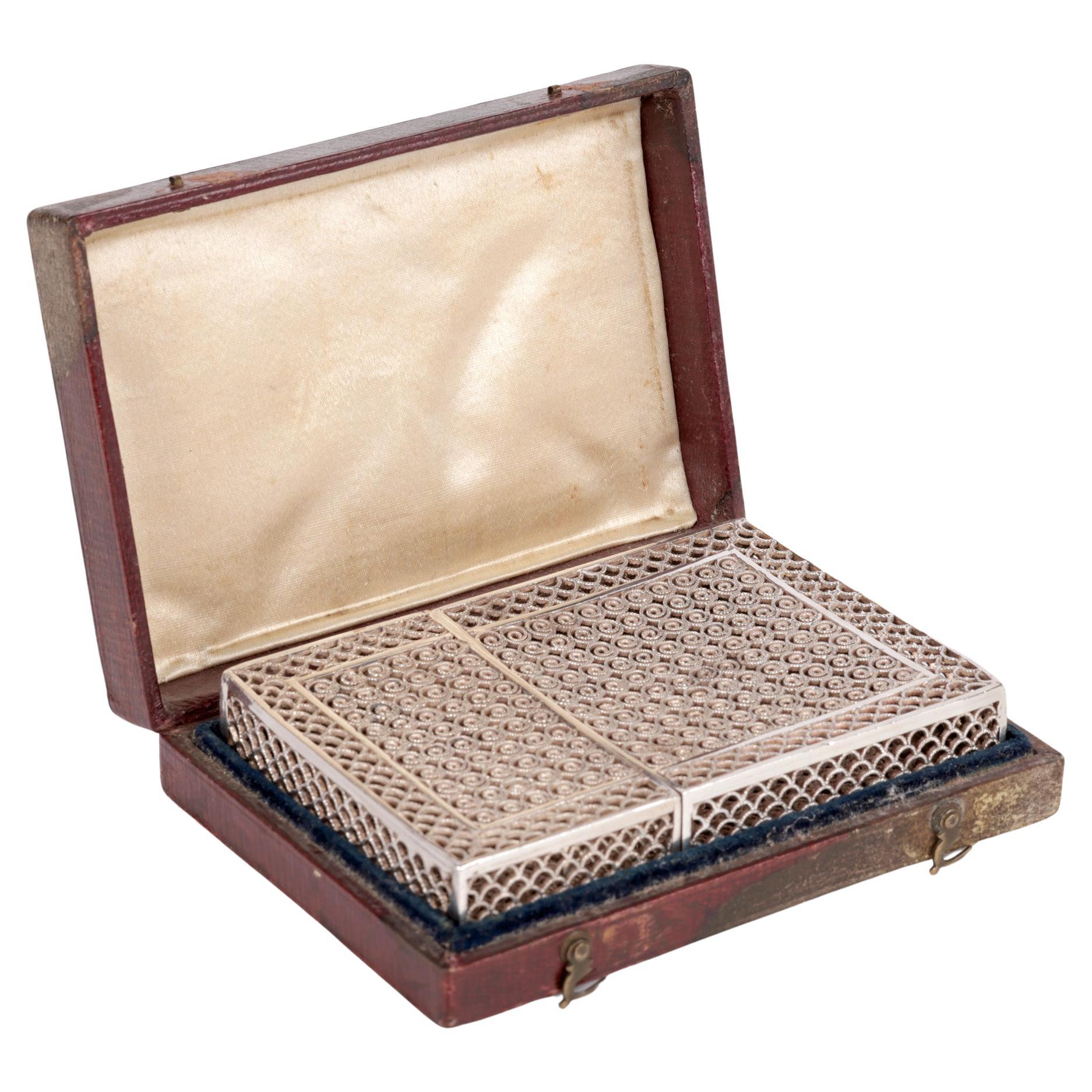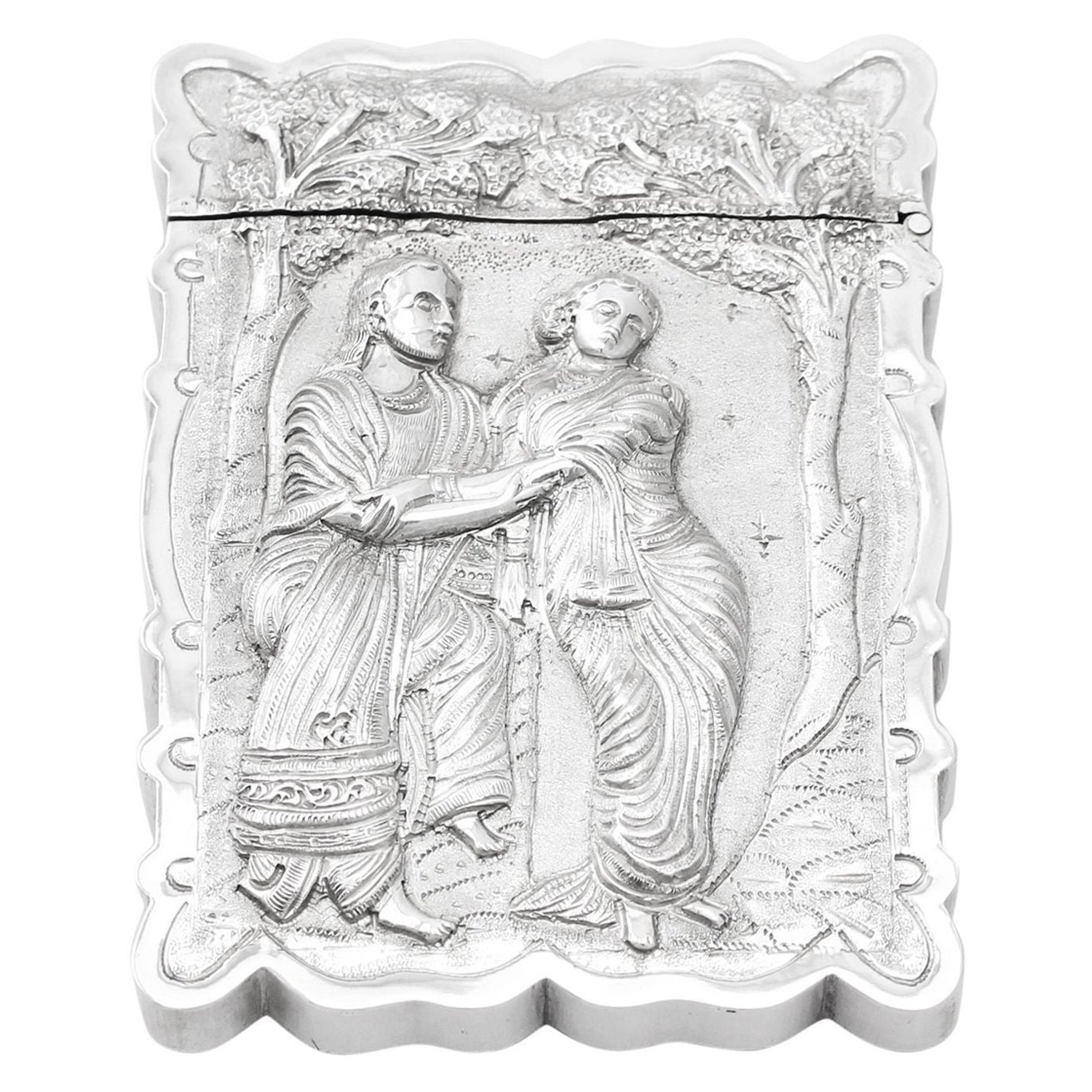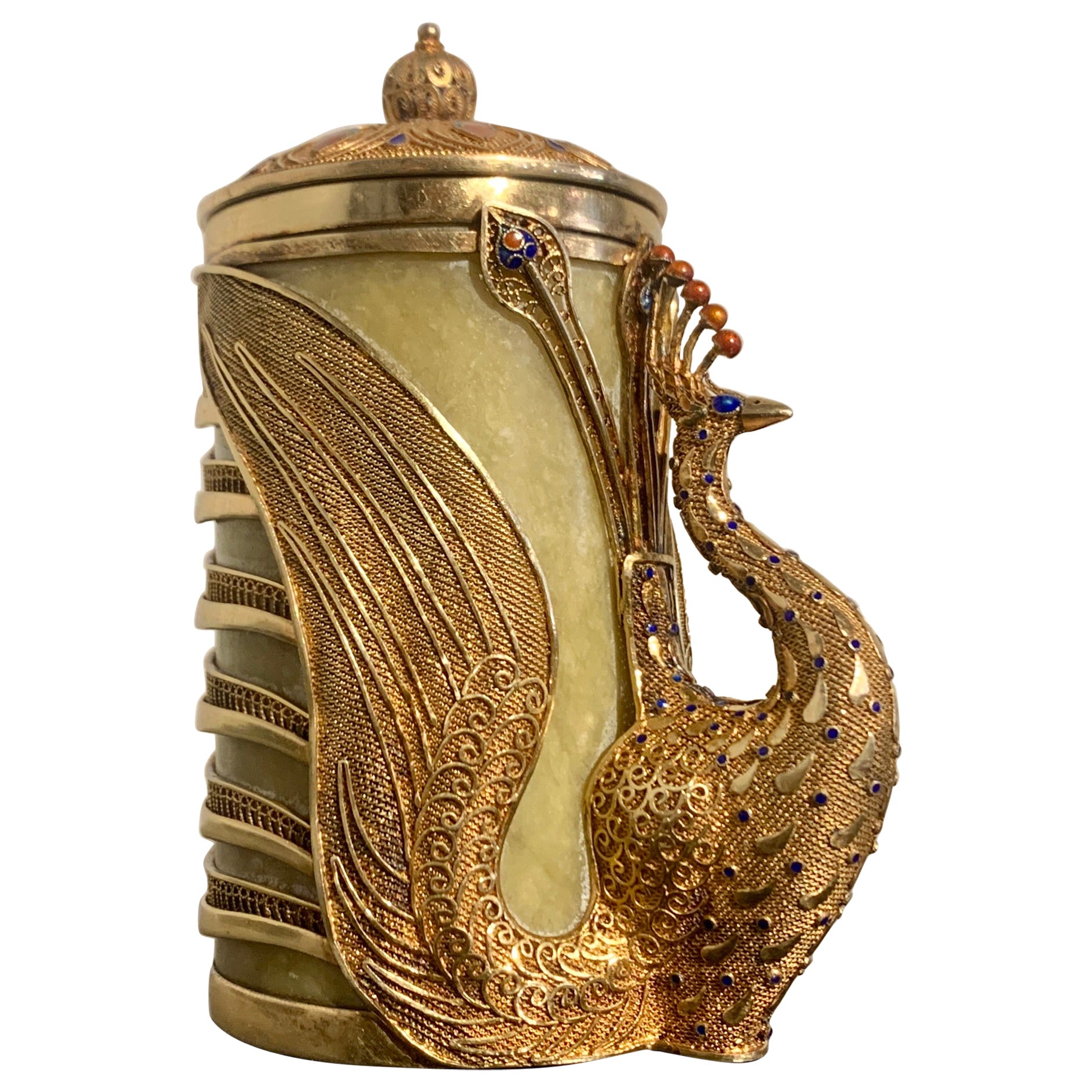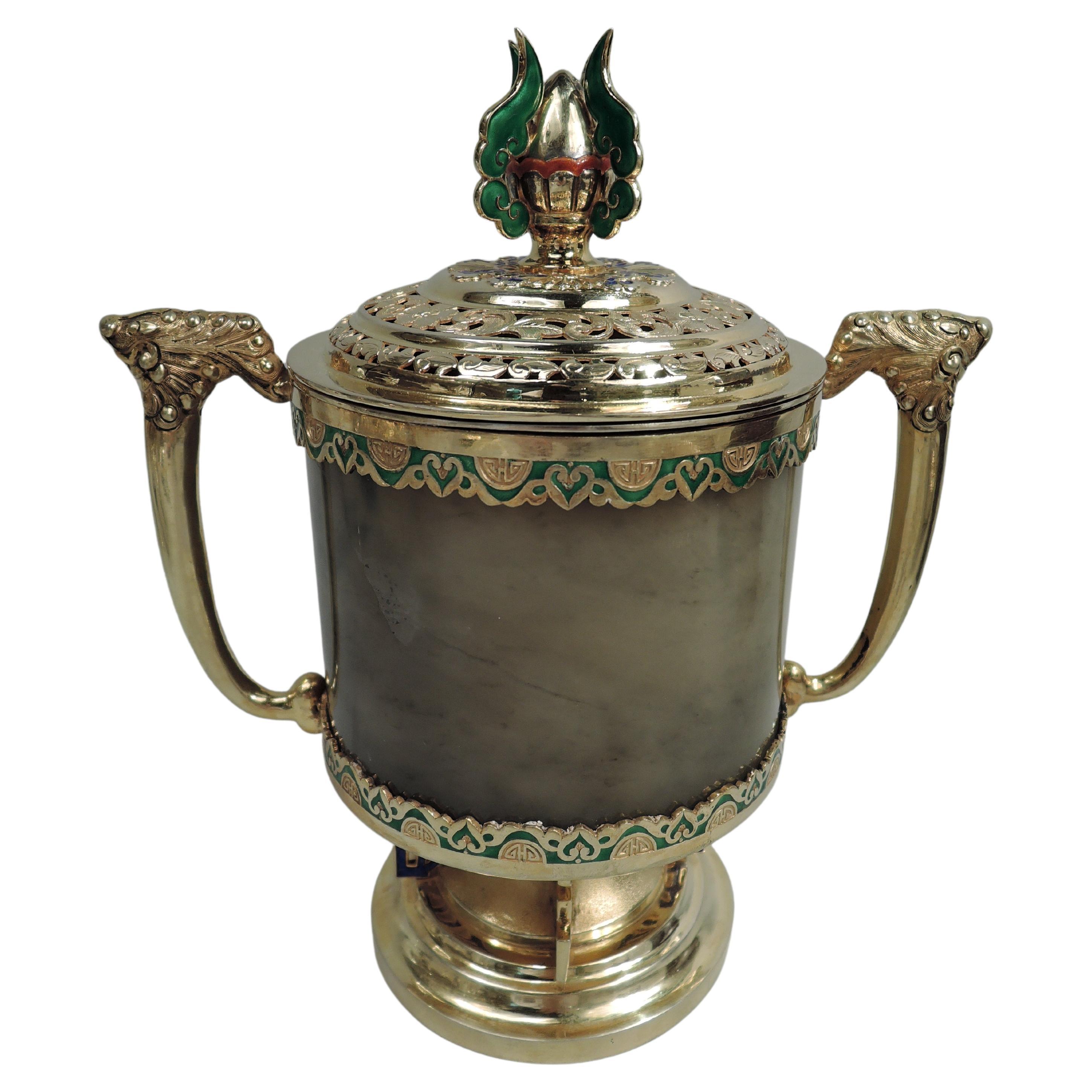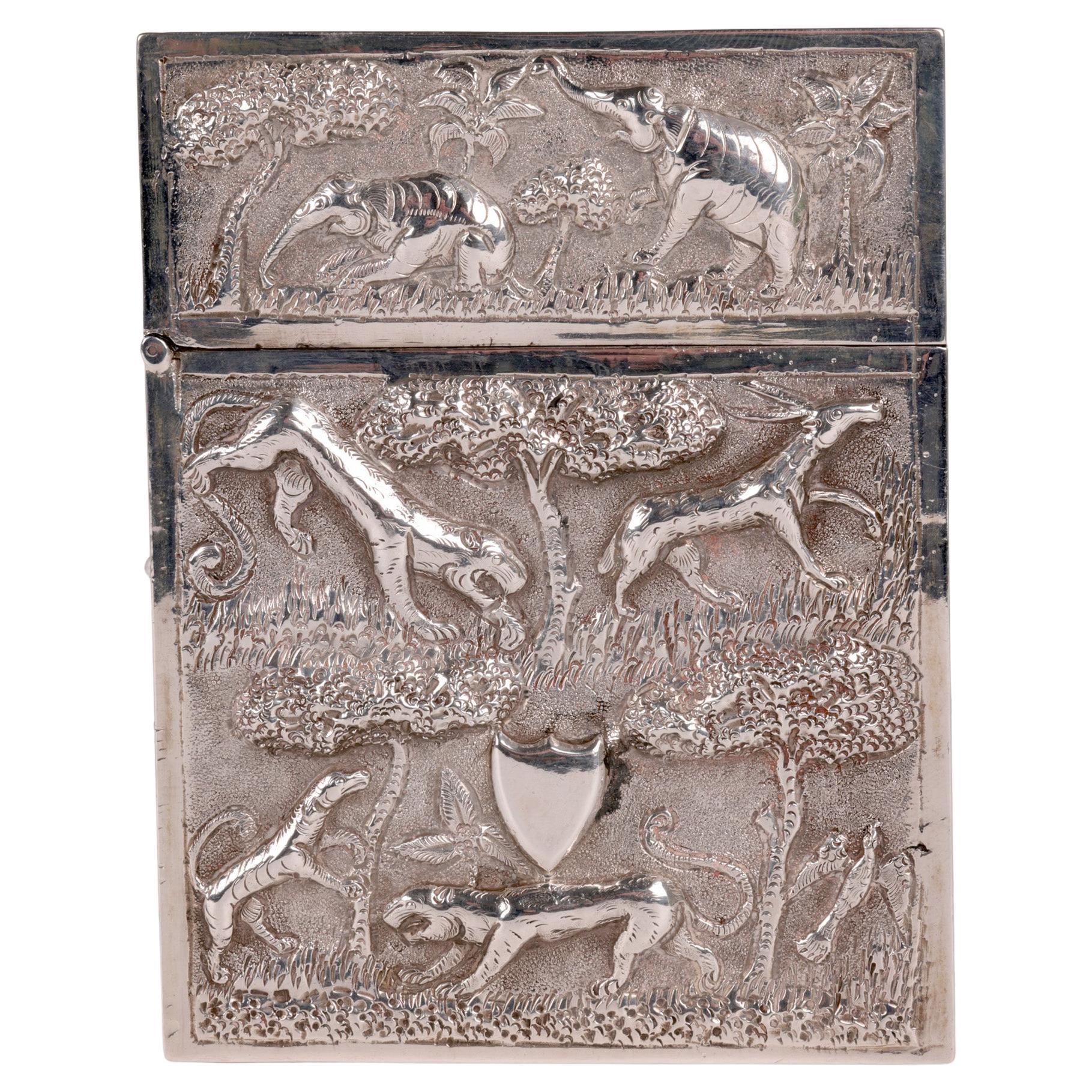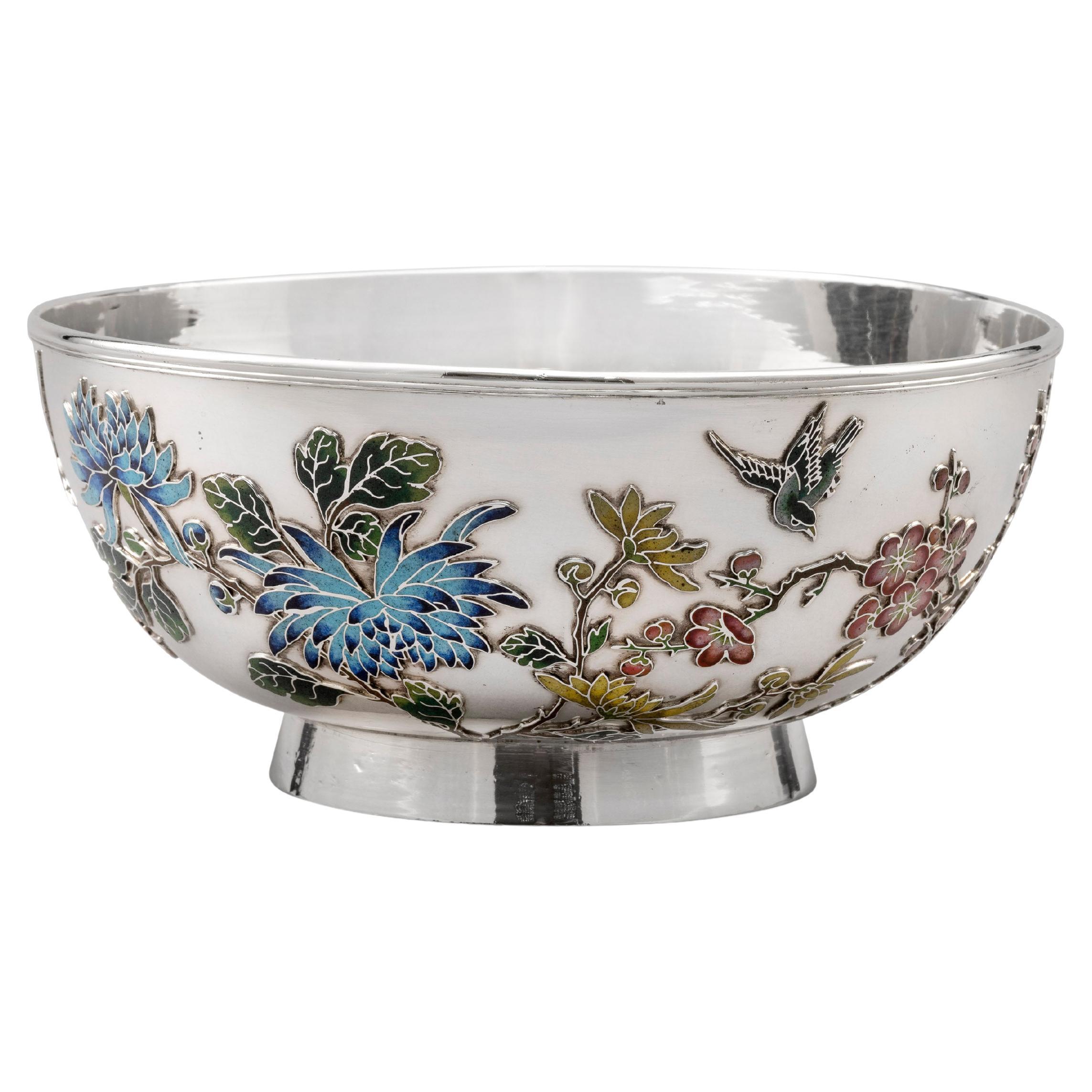Items Similar to Chinese Silver & Enamel Filigree Business Card or Card Case
Want more images or videos?
Request additional images or videos from the seller
1 of 12
Chinese Silver & Enamel Filigree Business Card or Card Case
About the Item
Late Qing Dynasty Circa 1910
From our Chinese collection, we are delighted to offer this Chinese Silver & Enamel Card Case. The Card Case of rectangular form cast in Silver with a pierced silver fish scale style pattern around the edge. The front and back decorated with scrolling filigree silver foliage and blossoming flowers on a checkerboard background surrounded by a blue enamel and filigree silver border. The Card Case dates to the late Qing period (1636-1912) during the rule of Xuantong Emperor circa 1910. The card case is an excellent collectors piece but would equally be useable as a luxury business card holder as photographed.
Qing Dynasty (officially the Great Qing) was a Manchu-led imperial dynasty of China and the last imperial dynasty in Chinese history. It emerged from the later Jin dynasty founded by a Tungusic-speaking ethnic group who became known as the Manchus. The dynasty was officially proclaimed in 1636 in Mukden (Shenyang) and following the Battle of Shanhai Pass it seized control of Beijing in 1644, which is often considered the start of the dynasty’s rule in China. Within decades the Qing had consolidated its control over the whole of China proper and Taiwan, and by the mid-18th century it had expanded its rule into Inner Asia. The dynasty lasted until 1912 when it was overthrown in the Xinhai Revolution. In Chinese historiography, the Qing dynasty was preceded by the Ming dynasty and succeeded by the Republic of China. The multiethnic Qing dynasty assembled the territorial base for modern China. It was the largest imperial dynasty in the history of China and in 1790 the fourth-largest empire in world history in terms of territorial size. With 419,264,000 citizens in 1907, it was the most populous country in the world at the time. See our article The Qing & I.
Filigree is a delicate ornamental detail woven with strips of silver, gold, or other metals, often to create a pattern or decoration.
Enamel (vitreous enamel) also known as porcelain enamel, is a material made by fusing powdered glass to a substrate by firing, usually between 750 and 850 °C. The powder melts, flows, and then hardens to a smooth, durable vitreous coating. The word vitreous comes from the Latin vitreus, meaning “glassy”.
Measurements (Centimetres) 10.5cm High x 7cm Wide x 1.5cm Deep
- Dimensions:Height: 4.13 in (10.5 cm)Width: 2.76 in (7.02 cm)Depth: 0.59 in (1.5 cm)
- Style:Qing (Of the Period)
- Materials and Techniques:
- Place of Origin:
- Period:
- Date of Manufacture:Circa 1910
- Condition:Wear consistent with age and use.
- Seller Location:Newark, GB
- Reference Number:
About the Seller
5.0
Vetted Seller
These experienced sellers undergo a comprehensive evaluation by our team of in-house experts.
Established in 2019
1stDibs seller since 2022
18 sales on 1stDibs
Typical response time: 3 hours
- ShippingRetrieving quote...Ships From: Newark, United Kingdom
- Return PolicyA return for this item may be initiated within 14 days of delivery.
More From This SellerView All
- Chinese Export Silver Basket Wang HingBy Wang Hing & Co.Located in Newark, EnglandFine Chinese silver basket (bon-bon dish/bridal basket) circa 1900. The presentation basket of circular form expertly crafted with spigs of blossoming flowers to the outer boarder ho...Category
Antique Early 1900s Chinese Qing Sterling Silver
MaterialsSilver
- Japanese Cloisonne Enamel Vase Ando CompanyBy Ando JubeiLocated in Newark, EnglandJapanese cloisonne enamel vase. The vase of globular form with tightly pinched neck and splayed opening decorated with a fine red ground enamel worked with wire and musen-shippo (wireless technique) with a central white rose with yellow tips surrounded by red leaves. The base signed to the centre with the Ando company mark and silver Jungin mark to the rim tashio-showa period. Notes Ando Cloisonné...Category
Mid-20th Century Japanese Meiji Metalwork
MaterialsSilver, Enamel
- Japanese Cloisonne Enamel Vase Ando CompanyBy Ando JubeiLocated in Newark, EnglandJapanese cloisonne enamel vase. The vase of ovoid form with circular opening, black enamel glaze and silver mounted rims. Boldly decorated with autumnal flowers and birds. To the top and bottom geometric patterns finish the vase. Notes Ando Cloisonné...Category
Early 20th Century Japanese Meiji Metalwork
MaterialsMetal, Silver, Enamel
- Japanese Cloisonne Enamel Vase Pair Meiji PeriodLocated in Newark, EnglandA sensational pair of Japanese Meiji period Cloisonne enamel bottle vases. The vases of slender hexagonal form with trumpet opening upon a circular foot. Decorated to the highest qua...Category
Antique Late 19th Century Japanese Meiji Metalwork
MaterialsMetal, Silver
- Japanese Cloisonne Enamel Peony Vase Ando CompanyBy Ando JubeiLocated in Newark, EnglandJapanese cloisonne enamel vase of large globular form, boldly decorated with a pastel green glaze surrounding florets of stylised peony flowers Tashio-early Showa period. The base signed to the centre with the Ando company mark and Jungin silver mark to the rim. Notes Ando Cloisonné...Category
20th Century Japanese Meiji Metalwork
MaterialsMetal, Silver, Enamel
- Japanese Cloisonne Enamel Butterfly Vase Hayashi KodenjiLocated in Newark, EnglandJapanese Meiji period cloisonne enamel vase decorated with butterflies. The vase of wide globular shape with stepped shoul...Category
Antique Late 19th Century Japanese Meiji Metalwork
MaterialsMetal, Silver, Enamel
You May Also Like
- Indian Antique Cased Silver Filigree Card CaseLocated in Bishop's Stortford, HertfordshireA very finely made antique Indian silver filigree card case presented in its original fitted box dating from the 19th century. The card case is of flat rectangular shape with a simple friction fitting detachable cover which fits snuggly over a shaped overlapping inner edge. The case is made from panels separated by thin silver banding...Category
Antique 19th Century Indian Metalwork
MaterialsSilver
- Antique Indian Silver Card CaseLocated in Jesmond, Newcastle Upon TyneAn exceptional, fine and impressive antique Indian silver card case; an addition to our diverse Asian silverware collection This fine antique Indian silver card case has a shaped rectangular form. The anterior surface of this case is embellished with a fine and impressive chased decorated panel depicting a scene with four characters in a boat above a shaped cartouche displaying the contemporary bright cut engraved initials ‘EH’. The reverse surface is ornamented with a chased decorated panel illustrating a male and female character in period Asian dress clasping each other under a tree canopy. The shaped sides and border to both the anterior and reverse surfaces are plain and unembellished. This antique silver card case is fitted with a hinged cover. Condition This fine antique solid silver card...Category
Antique Late 19th Century Indian Other Decorative Boxes
MaterialsSilver
- Chinese Export Hardstone and Gilt Silver Filigree Peacock Box, 1920's, ChinaLocated in Austin, TXAn exquisite Chinese export peacock from hardstone and gilt silver filigree canister box, Republic Period, circa 1920's, China. The graceful and elegant hardstone container of cyli...Category
Early 20th Century Chinese Qing Metalwork
MaterialsStone, Silver, Enamel
- Antique Chinese Silver Gilt, Agate & Enamel CenserLocated in New York, NYChinese silver censer, circa 1910. Drum-form agate body set in silver gilt mounts with scrollwork and lunettes. Leaf-capped side bracket handles. Upward tapering support and stepped ...Category
Early 20th Century Chinese Qing Metalwork
MaterialsAgate, Silver, Enamel
- Indian Heavy Silver Antique Animal Repoussé Card CaseLocated in Bishop's Stortford, HertfordshireA fine quality and heavily made antique Indian silver card case decorated in repoussé with animals and other scenes probably dating from the early 20th century. The card case is of f...Category
Early 20th Century Indian Metalwork
MaterialsSilver
- Chinese Export Silver & Enamel BowlLocated in London, GBA rare and exquisite Chinese Export silver & enamel bowl, made in Shanghai around 1895 by Huang Qui Ji, and retailed by the firm of Woshing. The bowl feat...Category
Antique 1890s Chinese Chinese Export Metalwork
MaterialsSilver
Recently Viewed
View AllMore Ways To Browse
Antique Silver Business Card Case
Silver Business Card Holder
Antique Metal Fire Surround
Large Outdoor Incense Burner
Tibet Dagger
Etched Indian Pot
Two Large Khmer Foo Dogs
Pie Ottoman
Frog Garden Stool
Meiji Crab
Ming Incense Burners
Celebrity Louis Vuitton Men
Chinese Bronze Kettle
Cloisonne Chopsticks
Fuji Yoshitoyo
Hammered Urli Vessel With Handles
Hong Kong Tray Brass Plaque
Indian Silver Diety
